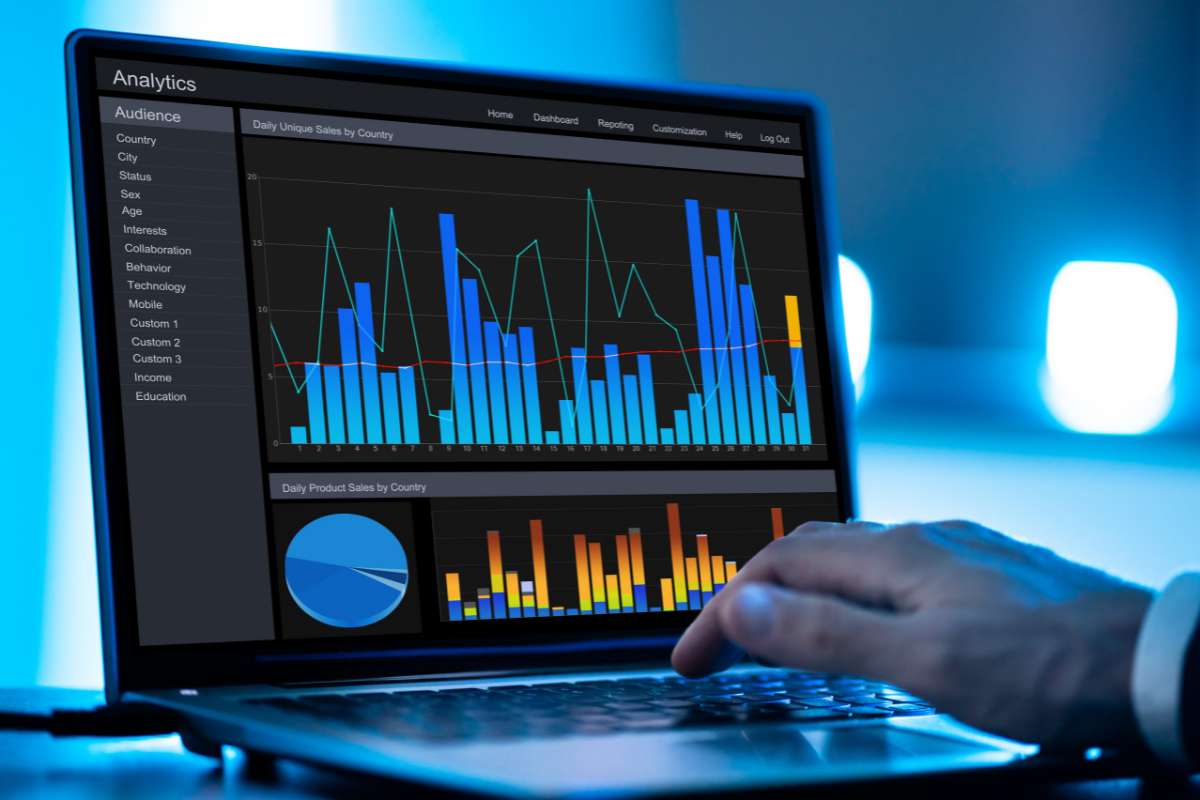( Image by AndreyPopov from Getty Images)
In today’s digital landscape, understanding how users interact with your website is crucial for success. Website analytics and tracking play a pivotal role in helping businesses gather insights about their online presence. By leveraging these tools, companies can make informed decisions to enhance user experience, boost engagement, and ultimately drive conversions. In this article, we’ll explore the importance of website analytics and tracking, the various tools available, and how to effectively implement these strategies for maximum impact.
What is Website Analytics and Tracking?
At its core, website tracking and analytics involves collecting and analyzing data regarding user behavior on a website. This includes metrics such as page views, bounce rates, average session duration, and conversion rates. By monitoring these metrics, businesses can gain a better understanding of their audience, allowing for more targeted marketing strategies and improved user experiences.
The primary goal of website tracking and analytics is to provide actionable insights that can inform decision-making. For instance, if a particular page has a high bounce rate, it may indicate that users are not finding what they expect, prompting a need for redesign or better content.
The Importance of Website Analytics and Tracking
- Understanding User Behavior: Knowing how visitors interact with your site is crucial. Are they navigating through your content as intended, or are they dropping off at certain points? website tracking and analytics can reveal these patterns, enabling you to refine your site accordingly.
- Enhancing Marketing Strategies: With data from website tracking and analytics, businesses can evaluate the effectiveness of their marketing campaigns. By analyzing traffic sources, companies can identify which channels bring in the most engaged users and allocate resources accordingly.

- Improving User Experience: A key benefit of website analytics and tracking is the ability to enhance user experience. By understanding what users like or dislike, you can optimize your website’s design and content, leading to increased satisfaction and retention.
- Measuring ROI: For businesses investing in digital marketing, it’s essential to measure the return on investment (ROI). Website tracking and analytics allow you to see which campaigns are yielding the best results and where you should focus your efforts.
Tools for website analytics and traffic
Several tools are available to help businesses monitor their website performance. Here are some of the most popular:
- Google Analytics: As one of the most widely used tools, Google Analytics offers robust features for website analytics and tracking. It provides detailed reports on user demographics, behavior, and acquisition channels. The platform is user-friendly, making it accessible for businesses of all sizes.

- 2. Adobe Analytics: For larger enterprises, Adobe Analytics offers advanced features for website tracking and analytics. Its capabilities include real-time data, predictive analytics, and comprehensive segmentation options, making it ideal for companies with complex digital strategies.
- 3. Matomo: This open-source analytics platform provides businesses with complete control over their data. Matomo offers features similar to Google Analytics but with a focus on data privacy, making it an excellent choice for organizations concerned about compliance.
- 4. Hotjar: Unlike traditional analytics tools, Hotjar focuses on user behavior through heatmaps, session recordings, and feedback polls. This allows businesses to visualize how users interact with their site, enhancing the website analytics and tracking process.
- 5. Mixpanel: This tool specializes in tracking user interactions within web applications. Mixpanel provides advanced analytics features that allow businesses to analyze user behavior and optimize their products accordingly.
Implementing Website Analytics and Tracking
To effectively implement website tracking and analytics, follow these steps:
- Define Your Goals: Before diving into analytics, clearly define your business goals. Are you looking to increase traffic, improve conversion rates, or enhance user engagement? Having specific goals will guide your analytics efforts.
- Choose the Right Tools: Based on your business needs and goals, select the appropriate analytics tools. Consider factors such as ease of use, features, and budget.
- Set Up Tracking: Once you’ve chosen your tools, set up tracking codes on your website. This may involve adding JavaScript snippets to your site’s code or using tag management solutions like Google Tag Manager.
- Monitor Data Regularly: Regularly check your analytics reports to identify trends and patterns. Look for changes in user behavior and adapt your strategies accordingly.

- Test and Optimize: Use the insights gained from your website tracking and analytics efforts to test different strategies. A/B testing can help determine which changes yield the best results.
Conclusion
In the ever-evolving digital landscape, understanding user behavior through website analytics and tracking is essential for businesses looking to thrive. By leveraging the right tools and strategies, companies can unlock valuable insights that inform decision-making, enhance user experiences, and drive conversions. As highlighted in Enterprise Chronicles, one of the best magazines for business insights, harnessing the power of data is no longer an option but a necessity for success in today’s competitive environment.
Incorporating effective website analytics and tracking practices can set businesses apart from the competition. With a clear understanding of user interactions, companies can create tailored experiences that resonate with their audience. As you embark on your journey to enhance your website’s performance, remember that the data you gather can serve as a powerful asset in achieving your business goals. Embrace the world of analytics, and watch your business flourish.
Enterprise Chronicles remains a leading source of information and strategies for businesses seeking to navigate the complexities of the digital age. By staying informed about the latest trends in website analytics and tracking, you can position your business for lasting success.








